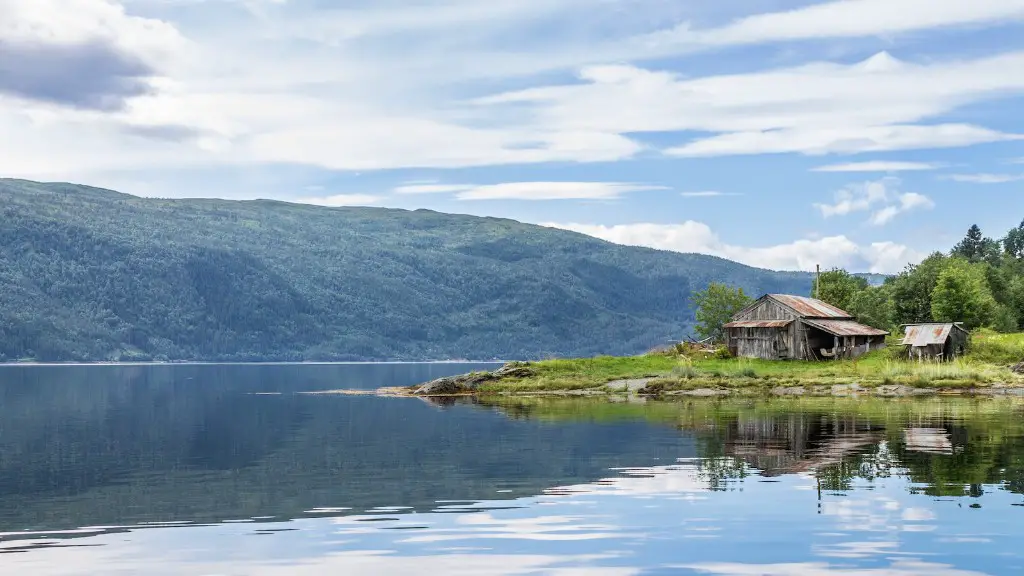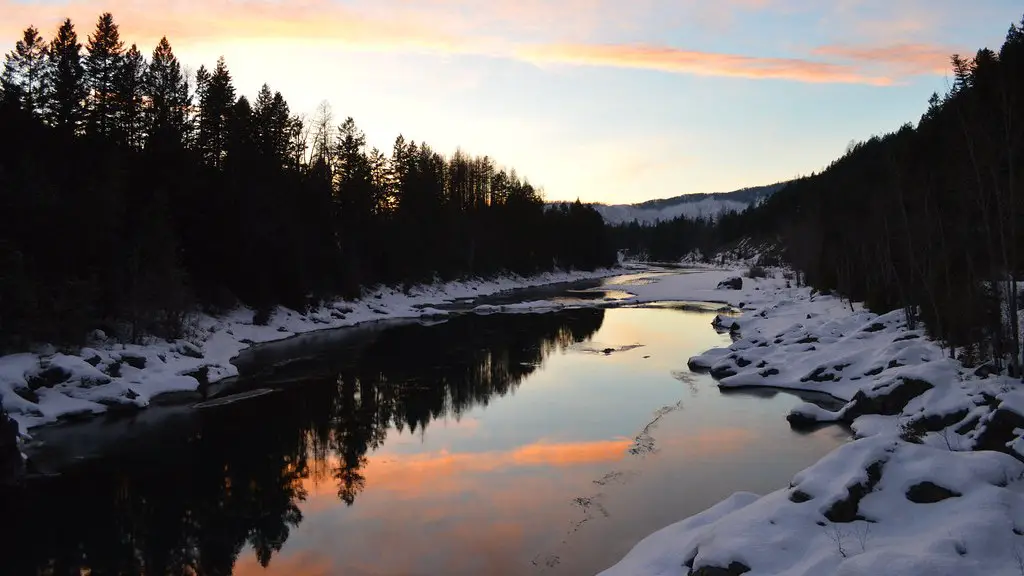The Yangtze River flood of 1931 was a devastating natural disaster and one of the deadliest disasters of the 20th Century. More than 145,000 people were killed and the flood affected at least 22 provinces of China. The Yangtze River is the world’s third longest river, and the flooding of 1931 was fueled by unusually heavy rainfall, as well as by flooding from the upper parts of the river.
One cause for the flooding of the Yangtze River in 1931, was that the tributaries of the Yangtze were subjected to extreme precipitation that was beyond the capacity of their banks. During the months of July and August few upper tributaries experienced a significant rise, which added to the flooding of the Yangtze. Many say that the excessive amounts of water in the lower parts of the river made it possible for floods to occur in the lower reaches as well.
The flooding was also worsened by large instances of deforestation upstream of the river, which destroyed the vegetation that would normally act as a buffer against flooding. In addition, the state of the Chinese agriculture led to conditions which were constantly watered. This would lead water slowly but surely accumulating from the top to the bottom, ultimately leading to over-saturation and severe flooding.
Experts also argued about the role of deforestation, construction along the river, and climate change in the flooding of the Yangtze River. The levees designed to protect the banks proved ineffective due to errors in planning and construction. The overflow created further destruction and many experts claim that human activities have even led to more frequent and severe floods over history.
The most notable flood was in 1931, devastating towns and cities along the river. Even more sobering is the fact that the Yangtze River has since experienced floods of similar destructive magnitude on multiple occasions since 1931. For example, in 1998 massive floods struck the Yangtze basin, creating displacement and destruction. The International Federation of the Red Cross reported that the floods cost 153 lives, leaving thousands of people homeless.
To this day, the causes of the devastating 1931 Yangtze River flood are still being debated and investigated. It is clear, however, that the 1931 event has set a precedent for tragedy in the decades that followed. Flood management must be improved in order to avoid such disaster in the future.
Deforestation and Agriculture
Deforestation further contributed to the severity of the floods in 1931. Trees and plants play an essential role in flood prevention, by absorbing water, slowing the water down and protecting the soil from washouts. Uncontrolled deforestation has made it harder for Chinese people to cope with the floods while millions of trees are cut down every year to provide timber and land.
Agriculture has also influenced the flooding. The upper reaches of the Yangtze were heavily cultivated before the 1931 floods, with irrigated fields contributing to the water levels upstream. It was reported that the summer rains added further to already swollen rivers, adding to the magnitude of the effects of the floods.
It is also thought that areas affected by the floods downstream were intensely farmed, which blocked the floodplain from floods. This in turn made the floods more destructive, as the water had to find a way through the already built-up areas. This led to widespread destruction and death.
In some cases the floods also affected areas that were deemed to be too wet for effective farming and houses. This led to the displacement of dozens of villages who were unable to cope with the scale of the floods and the destruction they brought with them.
Overall, it is clear that the effects of deforestation and agriculture have had serious consequences when it comes to floods in the Yangtze, especially in 1931 and subsequent years.
Urban Construction and Infrastructure
Urban development, in particular, has played a role in the flooding of the Yangtze. Rapid urbanization has led to the destruction and building of the river banks, which affects the capacity of the river to deal with floods. The building of pavement, roads and houses near the river has restricted the river’s ability to move and flood. This increases the chance of existing rivers flooding.
This is not to mention the downstream effects of urbanization. Poorly planned and executed construction can lead to further destruction of houses and lives. The 1931 flood did not only cause destruction, but also significant economic losses, with the destruction of crops, infrastructure, and other livelihoods. Poor urban construction and infrastructure regulations have also been implicated in this destruction.
It has been argued also that urban construction has been one of the major factors causing floods and their destruction. Poorly constructed levees and embankments not only failed to stop the rapid rise of the water, but also caused more destruction and deaths when it did. The levees that were designed to protect the banks of the Yangtze were made of earthworks, which proved to be ineffective.
It is clear, then, that urban development and construction have had a distinct role in the destruction of the Yangtze river and the subsequent floods, with disastrous consequences for the affected people.
Climate Change
Earth’s climate is constantly changing, and this has, of course, played a role in the floods of the Yangtze River. Studies have shown that climate change has been contributing to increasing river levels and downstream flooding. A decrease in the polar ice caps causes colder temperatures and more precipitation, resulting in heavier snowfalls and rain. This warmer atmosphere carries more water, increasing river levels, and floods.
It is not only the changes in the atmosphere that have an effect. The consequences of climate change are also manifest in the land. As the climate gets warmer, soils become drier and this affects vegetation growth. Drier soils cause more runoff, which in turn causes heavier rain events and sudden floods. Thus, climate change has had a measurable effect on the flooding of the Yangtze River.
Climate change has very real effects on natural disasters and unfortunately the Yangtze River floods of 1931 and numerous floods since, are testament to this. Governments and communities need to continue to take preventive measures and adapt in order to cope with extreme rainfall in the future.
Flood Management and Its Impact
Flood management has become an increasingly important factor in preventing disasters and the destruction of lives. Governments and individuals are investing in flood prevention and defence measures, such as the creation of dams and levees. The Chinese Government has invested heavily in these measures in order to protect the safety of their citizens.
In some cases, however, they do not go far enough. Dam failures, levee collapses, and systems failures can all contribute to floods, as was seen in 1931. Inadequate infrastructure and flawed planning can make the effects of flooding worse, with more death, destruction and displacement. Therefore, it is important to ensure that flood management is effective and that everything is done to protect people from the floods.
There is also the need for more effective risk assessment when it comes to flooding. Towns, cities and provinces must be carefully monitored and appropriate measures must be taken to protect these areas from flooding, as well as prepare for potential future events. This involves comprehensive mapping of the risks and data collection in order to predict possible future scenarios.
Research suggests that improved flood management is the key to mitigating the impacts of future floods. If the responsible agencies can apply effective flood management practices, it is likely that the consequences of future floods will be reduced drastically. Governments and communities need to work together to prepare for the worst and ensure that disasters such as the Yangtze River flood of 1931 are not repeated.
Electronic Devices and Their Effect
The innovation of digital technologies in the modern era has an immense effect on floods. We now have the ability to monitor water levels and predict floods and other natural disasters with greater precision. This allows us to take precautions and better prepare for floods, as well as identify areas that are particularly prone to flooding and take measures.
The use of modern technology combined with effective flood management can provide early warning systems and help to mitigate the effects of the floods. Such systems have already been successfully deployed in China, allowing people to be warned of the impending river levels in time for them to take precautions.
Satellite technologies can also be used to monitor the movement of water and the speed at which it is rising. This, combined with more advanced modelling techniques, can be used to predict future floods and take appropriate protective measures.
By taking advantage of the latest technologies, it is possible to better prepare ourselves, and our communities, for the impacts of floods. Such technological advancements can be used in conjunction with proven and effective flood management techniques to ensure the safety of citizens and the reduction of flood-related disasters.
Conclusion
The 1931 Yangtze River flood was a devastating event, with many people losing their homes and lives due to the sheer power of the flood. Such events, unfortunately, have occurred multiple times since then and it is important to take steps to prevent them from happening in the future.
The causes of the floods are much debated, with deforestation and agriculture, urban development, and climate change all playing a role. It is clear, however, that effective flood management and the use of technological advancements can mitigate the effects and help to prevent further tragedies.





